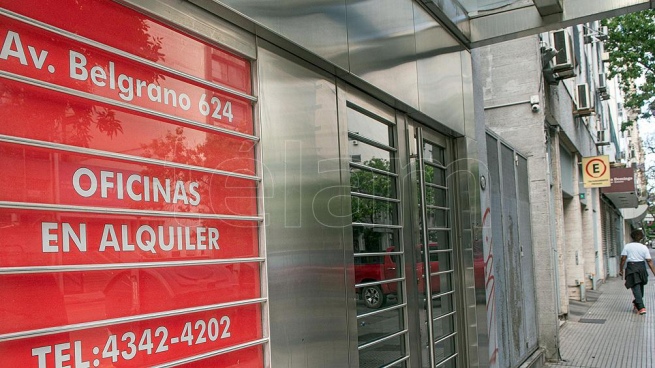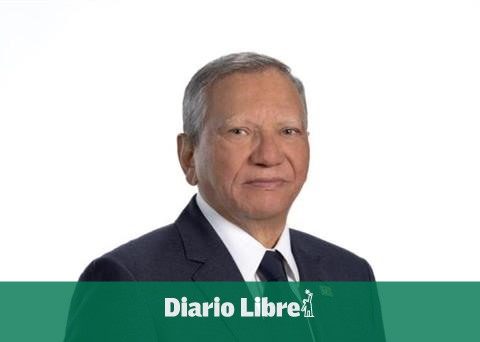The demand for offices was reactivated this year as companies began to define the work modality after the restrictions due to the pandemicwhich generated changes in the preferences of location, necessary surface and characteristics of the workspaces.
“The year started much better than one expected because we came from a very negative and uncertain scenario due to the pandemic and the economy, which was reflected in the office segment”, pointed out Martín Potito, director of the office division of LJ Ramos.
The executive told Télam that “The return to the office is taking place at a very intense speed” and that the activity is returning “but not many meters are being taken”, so it will take time to recover the occupation of the available surface.
He pointed out that there are new rentals due to relocation since “Rental values fell 20 to 30 percent and companies did ´fly to quality´, (that is) they went from a building with less provision to a better one”.
“They are taking up less space: a company that had a workforce of 100 employees needed, for example, 1,000 meters, and now with the rotation that remote work allows, the number of meters decreases,” he added.
According to the latest survey by LJ Ramos, class A offices in the city of Buenos Aires had a vacancy rate of 17.6% in the second quarter of the yearwhile prior to the pandemic the availability of meters was below 10%.
Among the areas that best resisted the pandemic is the Libertador Corridor, both in the City and in the province of Buenos Aires, and the Catalinas area, where there are buildings with good features that were left at competitive prices.
“The Catalinas area suffered a drop in demand like the rest of the submarkets, but its reactivation at the beginning of this year was faster than many other areas of the capital,” assured Nicolás Ferrero, research manager of CBRE Argentina.

He said that “today this area presents good investment opportunities, in fact, the construction of office buildings is still the main development there.”
Hernán Castro, senior broker at Cushman & Wakefield, pointed out that with the pandemic the vacancy in the office market “almost tripled”and that although “we are already in a normal life, as many meters were released, it will take time to be absorbed”.
“The rental market is activating a bit but there is a situation in which some companies continue to shrink, in general the companies have a hybrid system and the new concept is that they need fewer meters,” he explained in dialogue with Télam.
about pricessaid that “they fell depending on the submarket, in some they are trying to plateau it and that the fall in prices does not continue; we hope that it enters a plateau and from now on it can be recomposed next year.”
In the first half of the year, Cushman & Wakefield revealed that Buenos Aires closed the first half of 2022 reaching a vacancy of 15.9%and that there were more meters released than those taken.
According to the report, net absorption remained negative but showed signs of improvement over the same period last year.
Meanwhile, from Colliers Argentina indicated that “the gradual return of workers to their workplaces (in many cases under a hybrid scheme)” allows that “the demand for corporate spaces begins to have a slow recomposition showing signs of stability”.
“The office market is in a slow process of recovery, of which few details can be provided regarding the type of evolution and the times in which it will develop. For the moment, prices remain plateaued,” said Alejandro Badino, general manager of Colliers Argentina.
Consulted by Télam, the president of the Real Estate Chamber of the province of Buenos Aires (CIBA), Marta Libera, He stated that “at the national and provincial levels there is a slight curve upwards. Nothing very important, but a slight mark that indicates that the commercial premises, within which there are offices, have recovered.”

He analyzed that in the offices “a tendency to reduce structures” is perceived and he graphed that “accountants or lawyers think of merging spaces and concentrating activities: we receive units to sell that were previously destined for offices.”
“The trend is to get smaller premises or coworking spaces”, he pointed.
The president of the Colegio Martilleros de La Plata, Aníbal Fortuna, explained to Télam that “little by little the issue of offices is recovering” and that “there are no longer apartments to rent in the city that could function as offices, so that the rental offer is exhausted, there is a lot of demand for offices.”
He indicated that “the largest offices are the most needed because they are grouped by various professionals such as architecture studios, accountants or lawyers and also real estate agents.”
“In La Plata we are returning to normality, with a very good ordering system”raised.
In cordobathe percentage of unrented commercial premises and offices reached 4.8% in August this year, lower than the 9.1% that remained vacant during August 2021, according to a report prepared jointly by the Federal Council of Real Estate Colleges, the Professional Association of Real Estate Agents and the Center for Real Estate Statistics.
While, in Mar del Plata the office market “is firm”, according to sources from the College of Auctioneers of the seaside resort, and highlighted that currently “almost everything that exists is rented”.
“There is much less supply of this type of unit than in cities like Buenos Aires, and office buildings do not usually have more than 20 or 25, but in general there is good employment and those who had moved their work to the home due to the pandemic have occupied them again,” they told Télam from the institution.
















